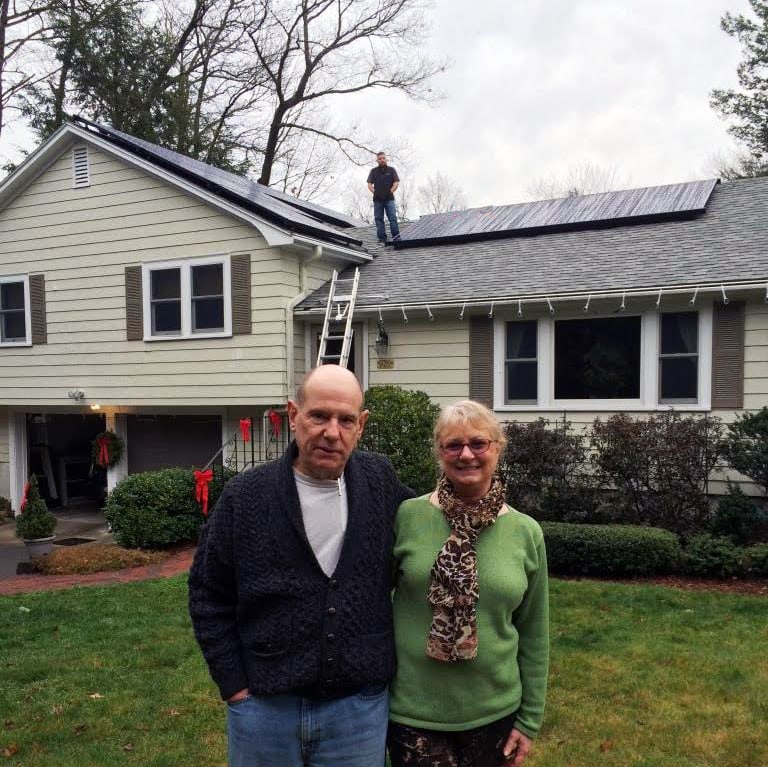 Can solar panels work at night? The short answer is yes, but only a bit. Jan Galkowski and his wife Claire of Westwood, MA have a solar configuration of 39 solar panels, all SunPower X-series 345 watt, in a 29-panel original array and a 10-panel array added a few years later. The Galkowski solar system is set up on their east and west-facing shaded roof, which is not the “ideal” positioning for solar panels, since solar panels are optimized in south-facing positions. Nevertheless, the Galkowskis are successful solar customers. In May 2021, Jan reported a phenomenon he didn’t expect – solar panels collecting light at night from a Supermoon.
Can solar panels work at night? The short answer is yes, but only a bit. Jan Galkowski and his wife Claire of Westwood, MA have a solar configuration of 39 solar panels, all SunPower X-series 345 watt, in a 29-panel original array and a 10-panel array added a few years later. The Galkowski solar system is set up on their east and west-facing shaded roof, which is not the “ideal” positioning for solar panels, since solar panels are optimized in south-facing positions. Nevertheless, the Galkowskis are successful solar customers. In May 2021, Jan reported a phenomenon he didn’t expect – solar panels collecting light at night from a Supermoon.
The Moon shines because it reflects the light of the Sun. Although the brightness may seem to change, the Moon reflects only 3-12% of the light from the Sun. The Moon seems brightest when it is 180 degrees from the Sun and half of the Moon’s full surface is reflecting Sunlight. This is known as the Full Moon; Supermoons are a bit different. A Supermoon is when the full Moon is slightly closer to the Earth, making it the biggest and brightest showing of the Moon during the year. The naked eye cannot detect the proximity and brightness of the Moon, but Supermoons are about 7% bigger and 15% brighter than the regular full Moon. May’s Full Moon is called the Flower Moon, originally coined by the Algonquin tribe due to the blooming of the flowers in the spring.
Luckily, Jan’s solar panels detected the brightness of the Flower Moon enough to generate around volts of power! In an email sent to Solaris Renewables, Jan writes, “There was a famously bright Full Moon. And while the 10-panel array didn’t notice enough to register much of anything, the 29-panel array did … Enough to generate a volt or so.”

The Galkowskis have also hosted a solar open house in their Westwood community. A solar open house is when a Solaris Renewables customer hosts their friends, family, and neighbors at their home to learn more about solar. Jan and Claire were eager to educate their friends on the benefits of going solar. Jan is a retired physicist whose extensive work can be found on his blog. More about the couple’s solar journey can be found here.
 After the Super Flower Moon, comes June’s Full Moon, the Strawberry Moon. The Strawberry Moon is just slightly out of the parameters of the “Supermoon” title (given when the Moon is 224,000 miles or less away from Earth). At 224,662 miles away, the brightness of June’s full Moon will still be noticeable in a clear night sky. Given the name “Strawberry Moon” by the Algonquin tribe, the June full Moon is the signal for ripening berries for a summer harvest.
After the Super Flower Moon, comes June’s Full Moon, the Strawberry Moon. The Strawberry Moon is just slightly out of the parameters of the “Supermoon” title (given when the Moon is 224,000 miles or less away from Earth). At 224,662 miles away, the brightness of June’s full Moon will still be noticeable in a clear night sky. Given the name “Strawberry Moon” by the Algonquin tribe, the June full Moon is the signal for ripening berries for a summer harvest.
Keep an eye on your monthly solar reports to see how the reflections of the Sun are detected by your solar panels. Reach out to us if you see your panels produce energy from moonlight!
Get Solar Panels
Interested in learning more about solar? Our team can answer any question you have about solar panels